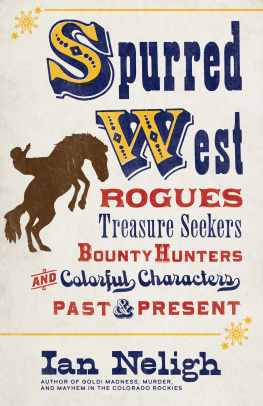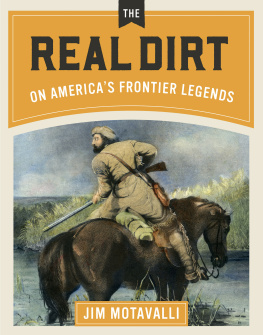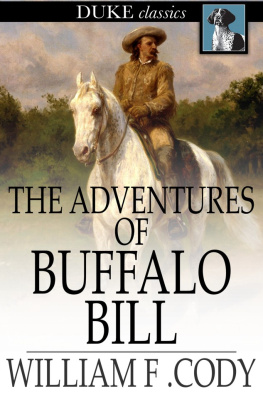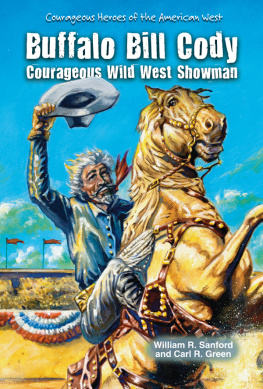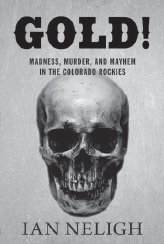
Praise for Gold!
Gold isnt just a mineral or a way to get richfor some Coloradans, its an obsession. Thats the premise of Ian Nelighs new book Gold! Madness, Murder and Mayhem in the Colorado Rockies, which tells the story of the gold rush and follows that vein all the way through todays prospectors. Written in a compelling journalistic style (Neligh edits the Clear Creek Courant in Idaho Springs), each chapter is devoted to a different fascinating gold hunter, alternating between the Wild West of the 1800s and the colorful characters who make up todays Colorado prospecting community. Colorado Life magazine
Ian Neligh recounts the story of the Colorado gold rush, bringing it forward to contemporary times, melding the old and the new. He tells about the men who still moil for gold in the Colorado Rockies. Denver Post
Journalist Ian Neligh traveled Colorado to learn more about the history and the present-day reality of gold mining. During his research, he uncovered a centuries-long story of obsession that often included murder, gun fights, deadly accidents, overnight fortunes and even cannibalism. Neligh is a practiced writer whose style mixes history and modern realities seamlessly. If you are a history buff or just enjoy a good true story, this book is for you. Colorado Country Life
SPURRED WEST
ROGUES, TREASURE SEEKERS, BOUNTY HUNTERS & COLORFUL CHARACTERS PAST AND PRESENT
IAN NELIGH

Text 2019 by Ian Paul Neligh
All rights reserved. No part of this book may be reproduced or transmitted in any form or by any means, electronic or mechanical, including photocopying, recording, or by any information storage and retrieval system, without written permission of the publisher.
Names: Neligh, Ian Paul, author.
Title: Spurred West : rogues, treasure seekers, bounty hunters, and colorful characters past and present / by Ian Neligh.
Description: [Berkeley] : West Margin Press, [2019] | Includes bibliographical references. | Summary: A collection of stories and interviews of the events and characters who contributed to the formation of the Wild West, with regional focus on the Colorado Rockies--Provided by publisher.
Identifiers: LCCN 2019022662 (print) | LCCN 2019022663 (ebook) | ISBN 9781513262420 (paperback) | ISBN 9781513262437 (hardback) | ISBN 9781513262444 (ebook)
Subjects: LCSH: Frontier and pioneer life--West (U.S.) | Brigands and robbers--West (U.S.) | Indians of North America--West (U.S.) | West (U.S.)--History. | Rocky Mountains--History.
Classification: LCC F591 .N415 2019 (print) | LCC F591 (ebook) | DDC 978--dc23
LC record available at https://lccn.loc.gov/2019022662
LC ebook record available at https://lccn.loc.gov/2019022663
Printed in USA
Proudly distributed by Ingram Publisher Services
Published by West Margin Press
WestMarginPress.com
WEST MARGIN PRESS
Publishing Director: Jennifer Newens
Marketing Manager: Angela Zbornik
Editor: Olivia Ngai
Design & Production: Rachel Lopez Metzger
Design Intern: Michelle Montano
Contents
For Dave,
Many thanks
Introduction
I t was an old gas station somewhere between Cody and Casper, Wyoming, filled with things that had sharp teeth. Through the distorted lens of childhood memory I recall it being dimly lit inside, packed full of taxidermied rattlesnakes, coyotes, and other predators pried from the dark corners of the West. Shelf after shelf contained some new and wondrous curiosity: snakeskin boots with fanged rattlesnake heads still attached, scorpions on cowboy hat bands, snarling dead animalsthe store felt wild.
Driving through Wyoming from Colorado to Yellowstone National Park was a regular pilgrimage for my family, and the strange little store in the middle of nowhere was a guaranteed stop along the way. From the walls hung stuffed heads of the incomprehensibly strange Jackalope, that enduring Western myth (and joke) about a jackrabbit with horns. The store also had giant containers of water, beef stew, coffee, crackers, and a massive barrel full of pickled eggseverything necessary for a day of rugged adventure in the wilderness. I dont know if I ever saw the stores owner, but if I did he must have been a bear of a man, with a thick beard, a booming laugh, and maybe a hint of something menacing in his eyes; the kind of man who would cheerfully resort to cannibalism rather than go on a vegan diet.
One year, for no discernible reason, we stopped visiting the strange little store in the middle of the Wyoming shortgrass prairie. But that didnt keep my imagination from traveling down those dim aisles packed with their monstrous cargo. The massive knives with bone handles behind the counter, jackets constructed of fur and bear claws; all these things only grew in my imagination with each passing year until I didnt know if it had been real or not. To me, it was a piece of the Wild West.
It wasnt until I was an adult returning on a trip home one year that I remembered to ask about the store, realizing with a start that it had once existed outside of my childhood fantasy. It was then my parents told me it had mysteriously burned to the ground many years ago and no longer existed. But it did remain firmly in my memories, and it became wilder with each passing year.
As a journalist working in the Rockies, Id often seen the relics of the Old West, that time between the end of the Civil War and the late nineteenth century. Ghost towns, abandoned gold mines, and derelict forts still haunt the lonely places between the valleys and mountain passes. Ive known people who discovered old six-shooters while out panning for gold, or a stash of vintage weapons hidden in a cave behind their house.
The Old West had a specific time and geographic location, and its remnants litter the landscape today like memorials to a time gone but not forgotten. The Wild West, on the other hand, was part real and part imaginary. It was where steely-eyed gunslingers traveled from town to town, bandits robbed stagecoaches, and cowboys rescued damsels in distress. It was a world created by those who hungered for tales of adventure, and by authors who were happy to provide them to their audiences. Some of it was real, but much was exaggerated. The real West was filled with farmers, ranchers, and miners, people whose lives were grown from the soil, scraped from the rock and pulled down from the mountains. Those stories were smaller and more difficult, and Americans didnt want those stories. They wanted heroes and villains.
Dime novels made legends of real-life characters like Wild Bill Hickok and Billy the Kid. Some even straddled the shifting line between the two Wests, like William Buffalo Bill Cody, who did his best to educate the world on his version of the real West while further perpetuating the myth of the other. As the gun smoke and dust eventually settled over the era, the Wild West lived on in books, movies, and the limitless borderlands of our thoughts. Time replaced the Old West with the new, but I wanted to know how much was real and what was still left, if there were still traces of the original hiding in the corners of the vanished frontier beyond just imagination. I spent a year searching for the answer, interviewing gunslingers, bounty hunters, bare-knuckle boxers, treasure hunters, brand inspectors, and more to compare them to their historic counterparts. I found the spirit of the Wild West lives on much as it did over a hundred years ago, but sometimes it evolved into something new. It is still wild, dangerous, and unpredictable. And sometimes, every once in a while, it has sharp teeth.
Next page
